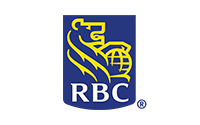
Cross-functional teams have become a common feature of today’s increasingly diversified organizations. When designed well, these teams have the ability to accomplish organizational goals with increased efficiency, faster decision making and better resource allocation. As well, by increasing diversity of thought and talent and using more of a systemic approach, the teams should be able to create better and more innovative solutions to organizational problems. However, they also present a specific set of challenges that set them apart from traditional management approaches.
4 Common Pitfalls Associated with Cross-Functional Teams
- Lack of shared purpose and/or silos. Teams and/or individuals may not be committed to a common shared purpose. In fact, departmental goals may even appear opposed to one another.
- Lack of goal clarity. Employees may be without goals or clearly defined goals which often leads to confusion, lack of motivation and disengagement.
- Resistance to change. Team members may not realize the benefits of collaboration including time savings through new efficient processes. Furthermore, they may have had poor experiences in the past and thus may not be willing to change their behaviours.
- Lack of full disclosure. Many departments are not clear on the work other departments within the system are doing. As a result, information sharing needs to happen at the beginning of the collaboration in order to find the best intersection between initiatives.
Strategies for Effective Collaboration
- Foster human connections by enabling team members to build trust and develop their relationships (e.g. face to face meetings; identifying common ground; pair team members). Enable them to also appreciate the diversity of ideas so that innovative solutions truly emerge.
- Develop shared goals. Ensure that the entire team owns the goal and has an equal voice. Ensure the team has discussed the organizational goals and that they believe their team has the right mix of abilities to accomplish the objective.
- Promote transparent communication. Expectations and standards should be developed to deal with issues such as working remotely, dealing with different departmental cultures and making effective decisions.
- Consider executive sponsorship to provide executive support, especially at the launch.
- Choose and align on collaboration software tools. Choose one that enables everyone to see the whole picture and the teams’ progress.
- Enable opting out. Collaboration with cross-functional teams is not always appropriate for every project. Furthermore, ensure that as initiatives proceed, individuals can participate at appropriate intervals in order to increase efficiency and speed. Think about processes such as meeting management and decision making and how they will best serve the purpose.
If you are working with cross-functional or matrix teams and want to enable them to increase their capacity and capability, contact us for more ideas and solutions. michelle@chambersandassociates.ca












